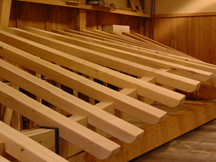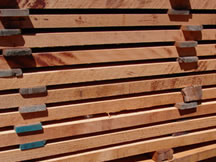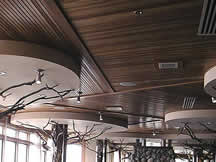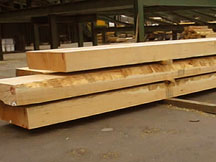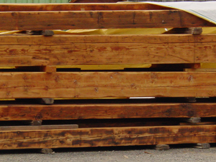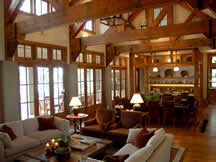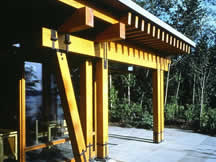DRYING PROCESSES
Dry lumber offers the advantages of stability and predictability; most of the changes in a piece of wood (cracks, twists, bows, etc.) are the result of moisture content fluctuation, a constant process that begins as soon as a tree is felled. By allowing this process to take place in a controlled environment, the undesirable side-effects can be minimized.
Air drying involves simply stacking sawn lumber in a dry place in such a fashion as to allow airflow between each piece. While this is effective and does not cost anything, there is a lower limit to how much moisture that can be removed (usually due to the environment in which the wood is being dried). Also, this method can take months (or years, with some slow-drying hardwood species) to achieve the desired moisture content.
Kiln drying makes use of an artificial heat source to increase drying speed. This adds cost to the final product, but is more rapid and controllable than air-drying. Although various methods exist; use of steam or electric heat are the two most common.
In both cases, there is a size restriction on lumber that can be dried; if a piece of wood is too large, the outside layers dry more quickly than the core, and the result is deep narrow cracks as the moisture escapes. This is particularly common with “boxed heart” beams, where the heart of the tree is roughly centered in the beam.
Radio Frequency Vacuum Kiln Drying (RF/VKD)To address the problem of kiln drying larger timbers, RF/VKD process makes use of microwaves in a near total vacuum to excite the water molecules present in a piece of wood. This causes excess water to boil out the ends of the timber, shunting the moisture out in a uniform fashion rather than surface-to-center. This results in less checking or twisting, and a moisture content of 12 to 15 percent.
For RFKD timbers our recommendation is to purchase “green” (freshly sawn) timbers oversized, to allow for the shrinkage and warping that is an unavoidable by-product of the process. We will then re-saw the timbers to true size depending on the parameters of the specific project.
